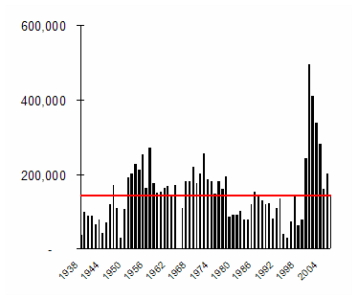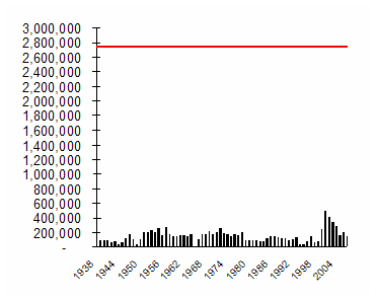The final tallies are just out for the spring and summer Chinook runs on the Columbia. I follow the counts at the Bonneville Dam (the lowest on the Columbia) because they’re a decent shorthand for the strength of salmon populations along the entire Columbia-Snake system, which is the biggest river network on West Coast. In fact, we use these counts for the Cascadia Scorecard’s wildlife indicator.
The numbers for 2007 weren’t great—roughly 145,000 Chinook made it up past the dam—but they weren’t awful either, at least relative to past years.
The chart below shows the spring and summer Chinook count from 1938 to 2007; the red line is this year’s count for comparison.
So this was a pretty typical year. Not as good as the last few years, but certainly better than most of the decade or two before that. But there’s another way of looking at these numbers that’s not quite so rosy.
The best estimates say that the spring and summer runs used to bring 2.5 to 3 million Chinook into the Columbia system. And these were all wild fish, stronger cousins to the anemic hatchery salmon that account for the majority of today’s spawners. Compared to their former abundance, the 2007 count is downright depressing.
The chart below shows the spring and summer Chinook count from 1938 to 2007; but this time the red line is the historical abundance for comparison.
I don’t have much to add to the story the chart tells. Just: yikes!









